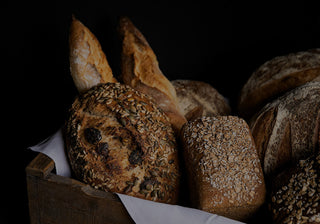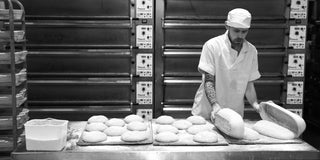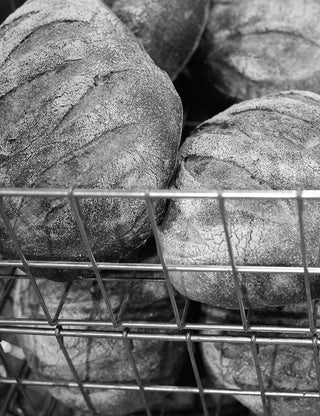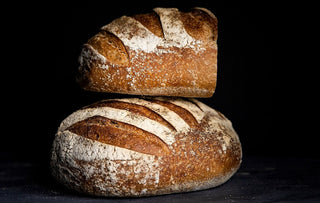

FACTORY BREAD
More than 90% of the bread sold in the UK is made by an industrial process developed in the early 1960s (The Chorley Wood method and its variants) which uses flour from which the germ and bran have been removed; a very rapid process taking around an hour and a half. Numerous additives are employed as preservatives or for “dough development” or improved handling in the machines. And modern fast active strains of yeast are used in quantities which help to speed the fermentation of the dough.
Most processed Wholemeal breads contain approximately 30% wholemeal flour. (see Which report 1st April 2018) Our Wholemeal breads are made from 100% wholemeal flour.
TRADITIONAL BREAD MAKING
Hambleton Bakery use stoneground flour wherever possible to retain the vitamins and minerals contained in the germ. Many of our loaves use sourdough culture (developed from wild yeast) for a longer and slower fermentation and where we do use Bakers’ yeast, long fermentations are still employed. The sourdough system starts by allowing a flour and water mix to ferment naturally. The beer barm method, popular in England, captures some yeasts from the brewing process to make a ‘starter’. In both systems the yeast is relatively weak and used in small doses in conjunction with long fermentation periods up to 24 hours. Long fermentations, and stoneground flour underpin the flavour and nutritious quality of our breads.
“TIME IS IN SHORT SUPPLY THESE DAYS: FOR US, IT’S THE MOST IMPORTANT INGREDIENT”
— JULIAN CARTER, CO-OWNER & HEAD BAKER
KEEPING BREAD TRADITIONAL
Hambleton Bakery’s bread is completely free of additives of any kind – no preservatives, no enzymes, no enhancers so how well does it keep without them?
Luckily, slow fermentation encourages the development of lactobacilli in the dough which create lactic acid, responsible for the slightly sour taste of sourdough bread. Lactic acid naturally inhibits the growth of mould therefore we expect our breads to last up to a week before signs of mould growth occur.
Bread should not be kept in a refrigerator which has a drying effect so is best kept in a bread bin at ambient temperatures. Staling is the process by which starch in the bread gradually hardens and it can be reversed by warming bread in the oven or toasting. Refreshing bread this way means you can enjoy your loaf over a number of days if you haven’t already eaten it!



